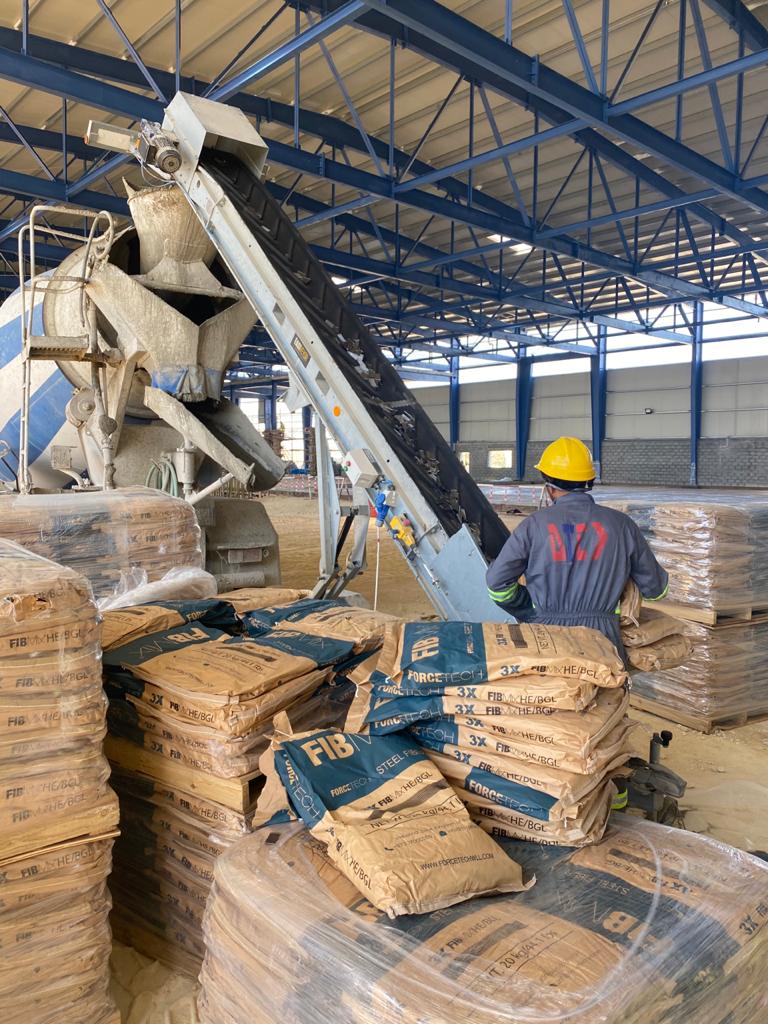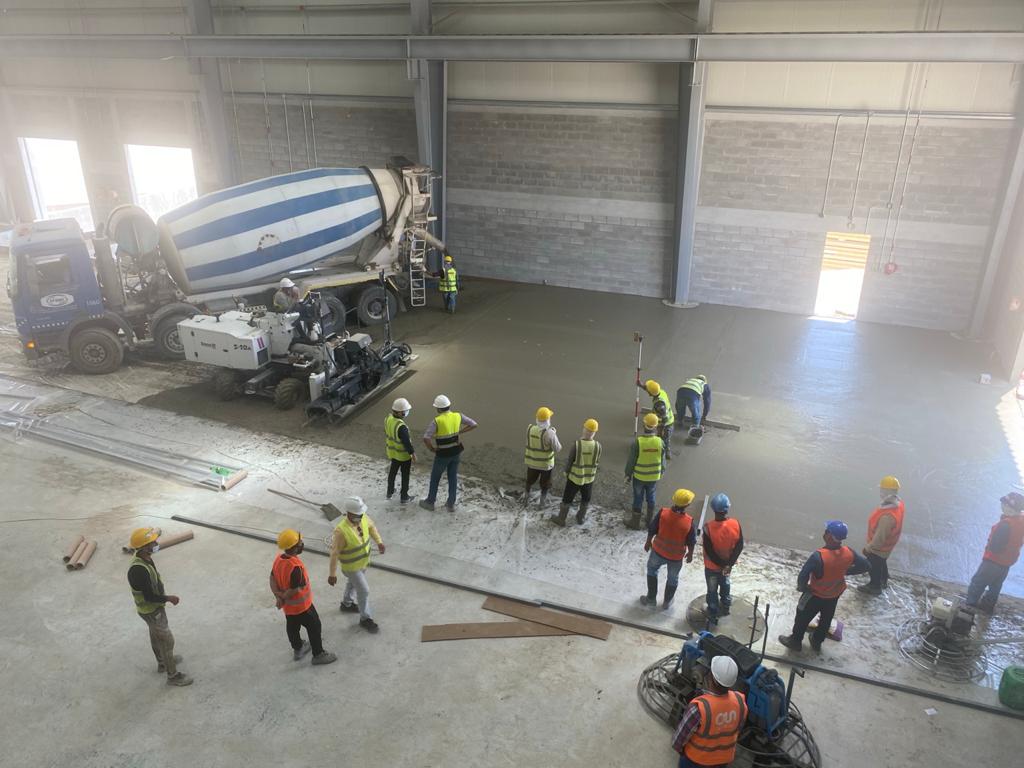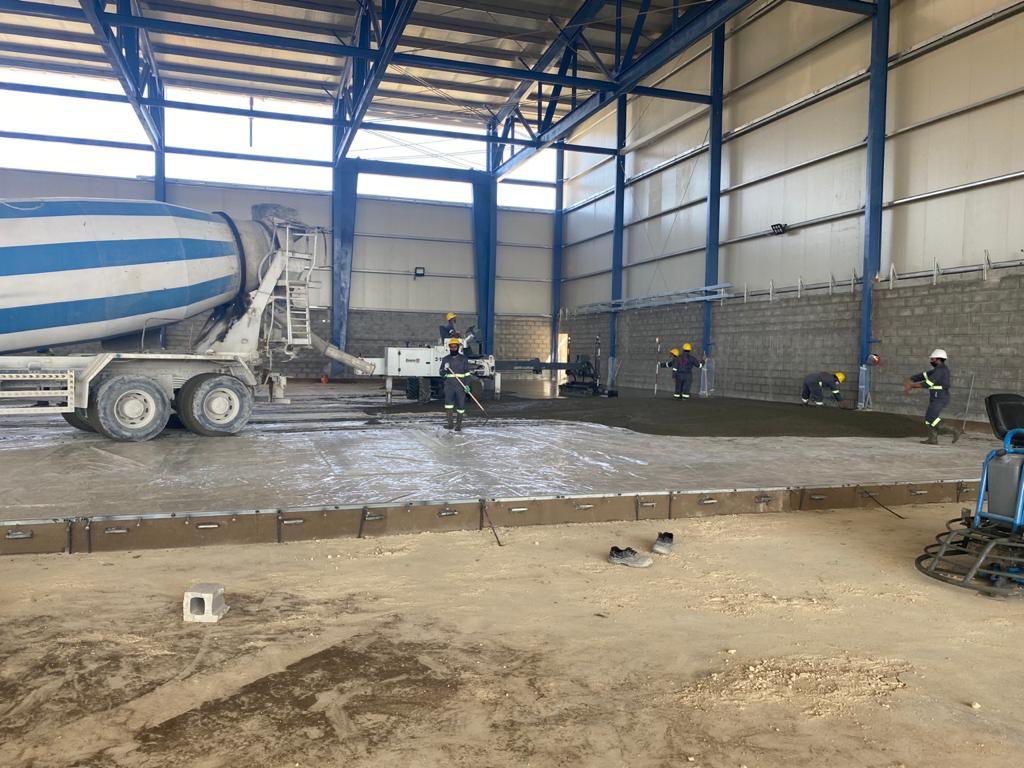How and When the Fiber is added?
How to use Steel Fibers in Concrete?
Typically the fibers are added at the batch plant, just after all concrete aggregates are being mixed. Some people would request to have the fiber added at the job site, but then the QA/QC should have more control on how much fiber is added. The steel fiber manufacturer can provide guidance on how to mix and the amount needed to obtain the desired results.
Be aware that if you add too much fiber, it might show up at the surface when finishing the concrete so be cautious about the amounts being mixed.


The importance of the total system
Just adding steel fibers to a load of concrete doesn’t ensure success. Steel fiber in concrete represents only one part of the system. There are other important elements to consider, including subgrade preparation, concrete mix design, and the total water in a mix.
The condition of the subbase is critical. The subgrade under a slab must have adequate drainage, be properly compacted, and have a flat, smooth surface. The installation of a good vapor barrier system also is recommended. Concrete placed over mud and water puddles shouldn’t be allowed. These areas should be removed, replaced with suitable material, and compacted before concrete is placed. The goal is to create a smooth surface to the underside of a concrete slab to freely move on when shrinking—slabs that get caught by irregularly shaped subgrade can become stressed enough to crack.
It’s wise to work out good aggregate distributions for a mix. Well-graded mixes require less cement, yielding stronger concrete. They also require less total water, so there is less shrinkage. The compressive, flexural, and tensile strength of concrete is largely due to the concrete mix design, not the addition of steel fiber. High flexural strength is especially necessary for quality concrete, steel fiber installation.
Deciding on the dosage of steel fiber to include in an application is important. For instance, to increase joint spacing on a project while still providing crack control might require 40 pounds per cubic yard of steel fibers added to a good low-shrinkage mix. Increasing joint spacing can be achieved by adding the right amount of fibers (and the right type) to a good concrete mix, adding the right amount of water, and placing it on a well-prepared subbase.
Uses and application of Steel fiber
Tunnel linings, Manholes, Risers, Burial Vaults, Septic Tanks, Curbs, Pipes, Covers, Sleepers ,Roller compacted concrete with steel fibers
Application of Steel fiber Reinforced Concrete in Structures:
A) Highway And Airfield Pavements:
– Repair of an existing pavement.
– Reduction in pavement thickness.
– Increase in resistance to impact.
– Increase in transverse and longitudinal joint spacing
– Smooth riding surface.
B) Hydraulic Structures:
– Resistance to cavitations or erosion damage.
– Repair of spilling basin.
C) Fiber Shotcrete (FRS):
The inclusion of steel fibers in shotcrete improves many of the mechanical properties of the basic material viz the toughness, impact resistance, shear strength, flexural strength, and ductility factor.
FRS has been used for
– Rock stabilization, tunnels, dams, mines.
– Bridges arches, dome structures, power-house
– Stabilization of slopes to prevent landslides repair of a deteriorated concrete surface, water channel ,etc.


